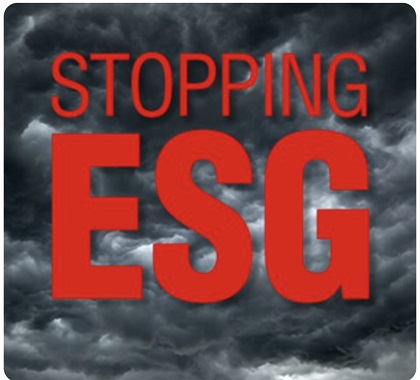The inaugural Partnership for Assessment of Readiness for College and Careers (PARCC) testing scores for the State of Illinois were made available in mid-December, and the results were discouraging. The Common Core-aligned PARCC test, administered by Pearson Education Inc., replaced the Illinois Standards Achievement Test (ISAT) and Prairie States Achievement Exam (PSAE) in 2015 and will be the state’s go-to test to gauge college and career readiness for at least the next three years.
When originally formed in 2010, PARCC, the self-described “next generation of standardized testing,” was a consortium of 23 states and the District of Columbia. Backlash against Common Core and standardized testing in general caused membership in PARCC to dwindle to just six states and Washington, DC by the end of 2015. Arkansas, Massachusetts, Mississippi, and Ohio all dropped the tests in the past year, with Maryland and New Jersey threatening to do so in 2016.
In Illinois, only 33 percent of students met or exceeded expectations on the assessment on both the math and reading portions of the exam in 2015. This is a significant drop from the final year of ISAT and PSAE testing – 59 and 54 percent proficient, respectively – but right in line with Illinois’ latest scores on the biennial, congressionally mandated National Assessment of Educational Progress (NAEP) tests.
Although not Common Core-aligned, NAEP tests, also known as “the Nation’s Report Card,” include a significant amount of Common Core overlap. Only 35 percent of 4th and 8th graders tested “proficient” in reading on the 2015 NAEP test, and only 37 percent of 4th graders and 32 percent of 8th graders tested proficient in math. Reading scores for high school seniors are unavailable as of this writing, but only 27 percent of seniors tested proficient in math in 2015.
On the district level, PARCC scores were equally disappointing. Only two of the state’s 10 biggest school districts – Naperville’s Indian Prairie Community Unit School District No. 204 and Naperville Community Unit School District No. 203 – had more than half of their students meet expectations. Chicago Public Schools, where union teachers are threatening their second strike in four years, enabled only one-quarter of their students to earn a score of proficient, and 130 schools in the district had fewer than 10 percent of their students meet expectations. In charter-school desert East St. Louis, Illinois, where teachers conducted a month-long walkout in November, only 3 percent of students met expectations, with not a single student in the district exceeding them.
Illinois’ woeful performance on this and other tests underscores the desperate need for the state to expand school choice opportunities far beyond what is currently available. Too many public schools in Illinois are failing to prepare students academically for productive lives, and those that serially underperform should be shuttered. Parents should be allowed to choose the schools their children attend and should not be penalized financially if that choice is a private religious or secular school. A universal education savings account (ESA), like the one recently passed into law in Nevada, would go a long way toward remedying Illinois’ dismal record of failing to educate its children. The goal should be to allow every parent to choose, require every school to compete, and give every child an opportunity to attend a quality school.
The following documents provide more information on school choice and education reform.
Ten Principles of School Choice
https://heartland.org/policy-documents/ten-principles-school-choice
Since the U.S. Supreme Court ruled in 2002 school vouchers are constitutional, grassroots activists around the country have been organizing to support passage of school choice programs. Legislatures passed statewide programs in Colorado and Florida, and other states are expected to follow their lead. At least 35 cities have privately funded voucher programs. This booklet from The Heartland Institute provides policymakers and civic and business leaders a highly condensed and easy-to-read guide to the debate. It presents the 10 most important principles of the school choice movement, explaining each principle in plain and precise language. It also contains an extensive bibliography for further research, including many links to documents available on the Internet, and a directory of the websites of national organizations that support school choice.
High School Closures in New York City: Impacts on Students’ Academic Outcomes, Attendance, and Mobility
https://heartland.org/policy-documents/high-school-closures-new-york-city-impacts-students-academic-outcomes-attendance-an
In the first decade of the twenty-first century, the NYC Department of Education implemented a set of large-scale and much-debated high school reforms, which included closing large, low-performing schools; opening new, small schools; and extending high school choice to students throughout the district. The school closure process was the most controversial of these efforts. Apart from the general sense school closures are painful, there was no rigorous assessment of their impact, so the Research Alliance (RA) undertook a study of the 29 low-performing high schools designated for closure in New York City between 2002 and 2008. RA found closing high schools produced meaningful benefits for future students, such as the middle schoolers who then had to choose a different high school. Many of these students ended up going to higher-performing schools than the closed ones, both in terms of the achievement and attendance of incoming students. “Post-closure” students’ outcomes improved significantly; the graduation rate for these students increased by 15 percentage points.
The Legal Landscape of Parental-Choice Policy
https://heartland.org/policy-documents/legal-landscape-parental-choice-policy
The U.S. Supreme Court decision in Zelman v. Simmons-Harris cleared away the most significant obstacle to the expansion of private school choice programs by ruling the First Amendment’s Establishment Clause does not preclude faith-based schools from participating in private school choice programs. These programs raise other important legal questions, which fall into four categories: the scope of students’ rights to an education and parents’ rights to choose their children’s schools; state constitutional obstacles to private school choice; the effect of laws governing racial integration and the inclusion of disabled students; and the religious liberty implications of faith-based schools participating in such programs. The American Enterprise Institute (AEI) writes the lack of clarity on these questions poses challenges, but AEI also says these questions create opportunities for proponents of private school choice to scale up existing programs and expand program options.
Markets vs. Monopolies in Education: A Global Review of the Evidence
https://heartland.org/policy-documents/markets-vs-monopolies-education-global-review-evidence
This paper from the Cato Institute examines the success achieved by school choice programs across the globe. The authors find the efficiency rate (student achievement per dollar spent on education) of private education options was higher compared to the public education efficiency rate in 23 of the studies surveying foreign countries, and only three of those studies found equal or greater efficiency in public schools.
The Fiscal Effects of School Choice Programs on Public School Districts
https://heartland.org/policy-documents/fiscal-effects-school-choice-programs-public-school-districts
In the first-ever study of public school districts’ fixed costs in every state and Washington, DC, Benjamin Scafidi concludes approximately 36 percent of school district spending cannot be quickly reduced when students leave. The remaining 64 percent, or approximately $8,000 per student on average, are variable costs, changing directly with student enrollment. This means a school choice program attaching less than $8,000 to each child who leaves a public school for a private school actually leaves the district with more money to spend on each remaining child. In the long run, Scafidi notes, all local district spending is variable, meaning all funds could be attached to individual children over time without creating fiscal problems for government schools.
A Win-Win Solution: The Empirical Evidence on School Vouchers
https://heartland.org/policy-documents/win-win-solution-empirical-evidence-school-vouchers
Greg Forster of the Friedman Foundation for Educational Choice collected the results of all available empirical studies that use the best available scientific methods to measure how school choice vouchers affect academic outcomes for participants and all available studies on how vouchers affect outcomes in public schools. Contrary to the widespread claim vouchers do not benefit participants and that they hurt public schools, the empirical evidence consistently shows vouchers improve outcomes for participants and those who remain in public schools.
How School Choice Programs Can Save Money
http://www.heritage.org/Research/Education/wm727.cfm
This Heritage Foundation study of the fiscal impact of voucher programs notes Washington, DC vouchers cost only 60 percent of what the city spends per pupil in government schools. The study estimates if the states with the top eight education expenditures per pupil adopted voucher programs similar to the Washington, DC program, they could save a combined $2.6 billion per year.
Fear and Privatization
http://epx.sagepub.com/cgi/content/abstract/22/1/204
Bruce S. Cooper of Fordham University and E. Vance Randall of Brigham Young University examine public attitudes toward school choice models and find much anxiety among both private and public school advocates. The authors make many common mistakes and assumptions about school choice, but they come to an interesting conclusion: School choice advocates are successfully blurring the lines between the public and private school models by instituting a wide range of different choice plans.
Study Finds School Vouchers Boost College Enrollment for African Americans by 24%
https://heartland.org/policy-documents/effects-school-vouchers-college-enrollment
In an experimental study examining the long-term outcomes of school voucher programs, Matthew M. Chingos and Paul E. Peterson found the percentage of African-American students who enrolled part-time or full-time in college by 2011 was 24 percent higher for those who had won a school voucher lottery while in elementary school and used the voucher to attend a private school.
The Parent Trigger: A Model for Transforming Education
https://heartland.org/policy-documents/parent-trigger-model-transforming-education
The parent trigger is an education reform innovation passed in California in January 2010. If half the parents whose children attend a failing public school sign a petition requesting reform of the school, the school must either shut down, become a charter school, or undergo one of two other types of reform. Unlike most reform proposals based on empowering parents, the parent trigger originates from activists on the political left. This pedigree creates an opportunity for a successful coalition that can advance reform. Both sides of the political spectrum can support the parent trigger because it could allow parents to choose to create a new charter or voucher program in a failing district and it could empower low-income and minority parents to control the reform path their schools follow.
The Parent Trigger: Justification and Design Guidelines
https://heartland.org/policy-documents/parent-trigger-justification-and-design-guidelines
This Heartland Institute Policy Brief presents the rationale for empowering parents with parent trigger legislation and offers design guidelines for parents and elected officials interested in crafting legislation for their city or state. It is a companion piece to two earlier reports on the parent trigger, also published by The Heartland Institute, and it carries the analysis considerably further by citing many of the bills that have been introduced since the original studies were written. The report also benefitted from a series of Research & Commentary collections produced by Heartland Institute Research Fellow Joy Pullmann, which are available on Heartland’s TheParentTrigger.com website.
Nothing in this Research & Commentary is intended to influence the passage of legislation, and it does not necessarily represent the views of The Heartland Institute. For further information on this subject, visit School Reform News at http://news.heartland.org/education, The Heartland Institute’s website at http://heartland.org, and PolicyBot, Heartland’s free online research database at www.policybot.org.
The Heartland Institute can send an expert to your state to testify or brief your caucus; host an event in your state; or send you further information on a topic. Please don’t hesitate to contact us if we can be of assistance! If you have any questions or comments, contact Heartland Institute Government Relations Director John Nothdurft at [email protected] or 312/377-4000.




